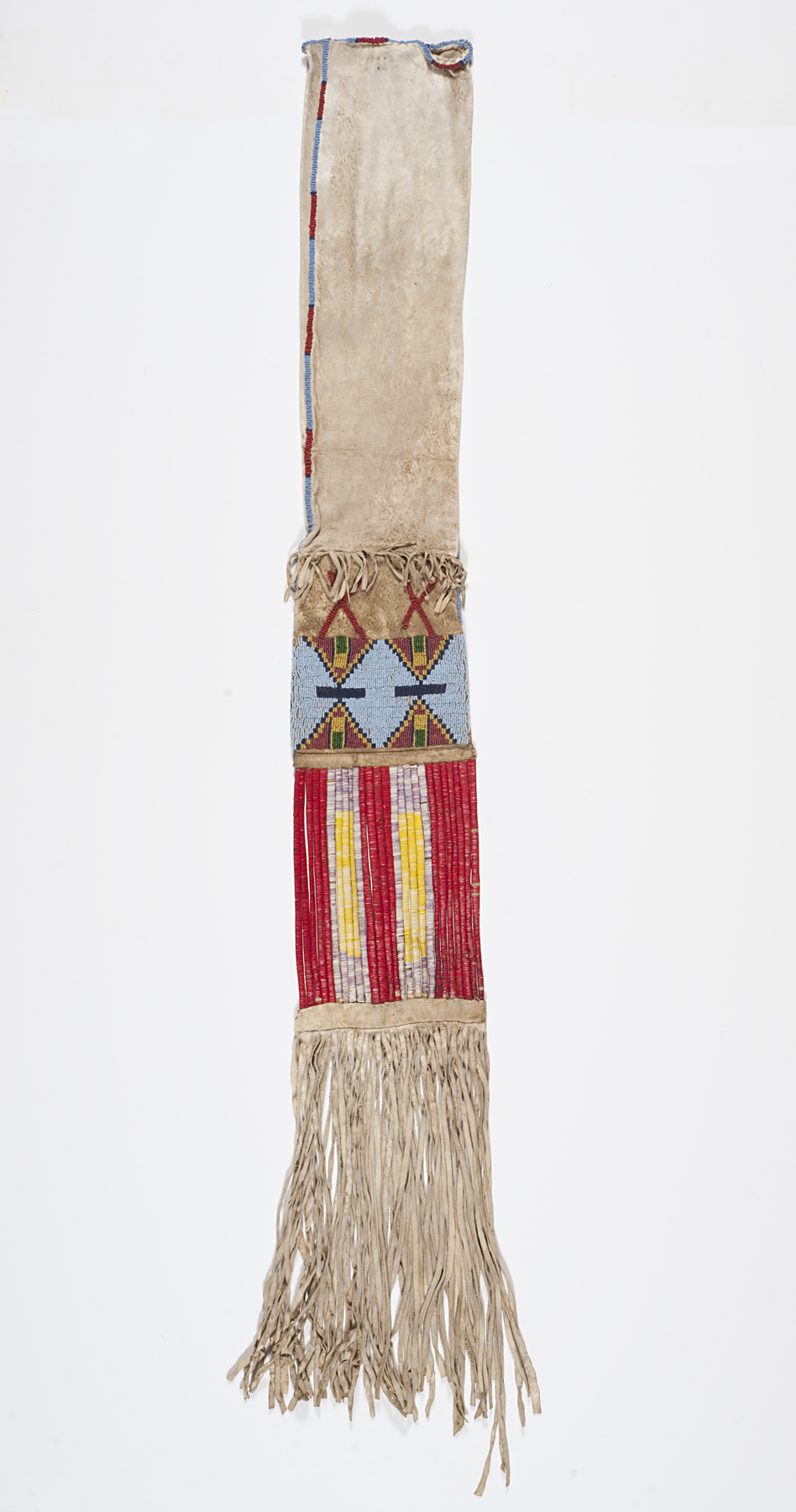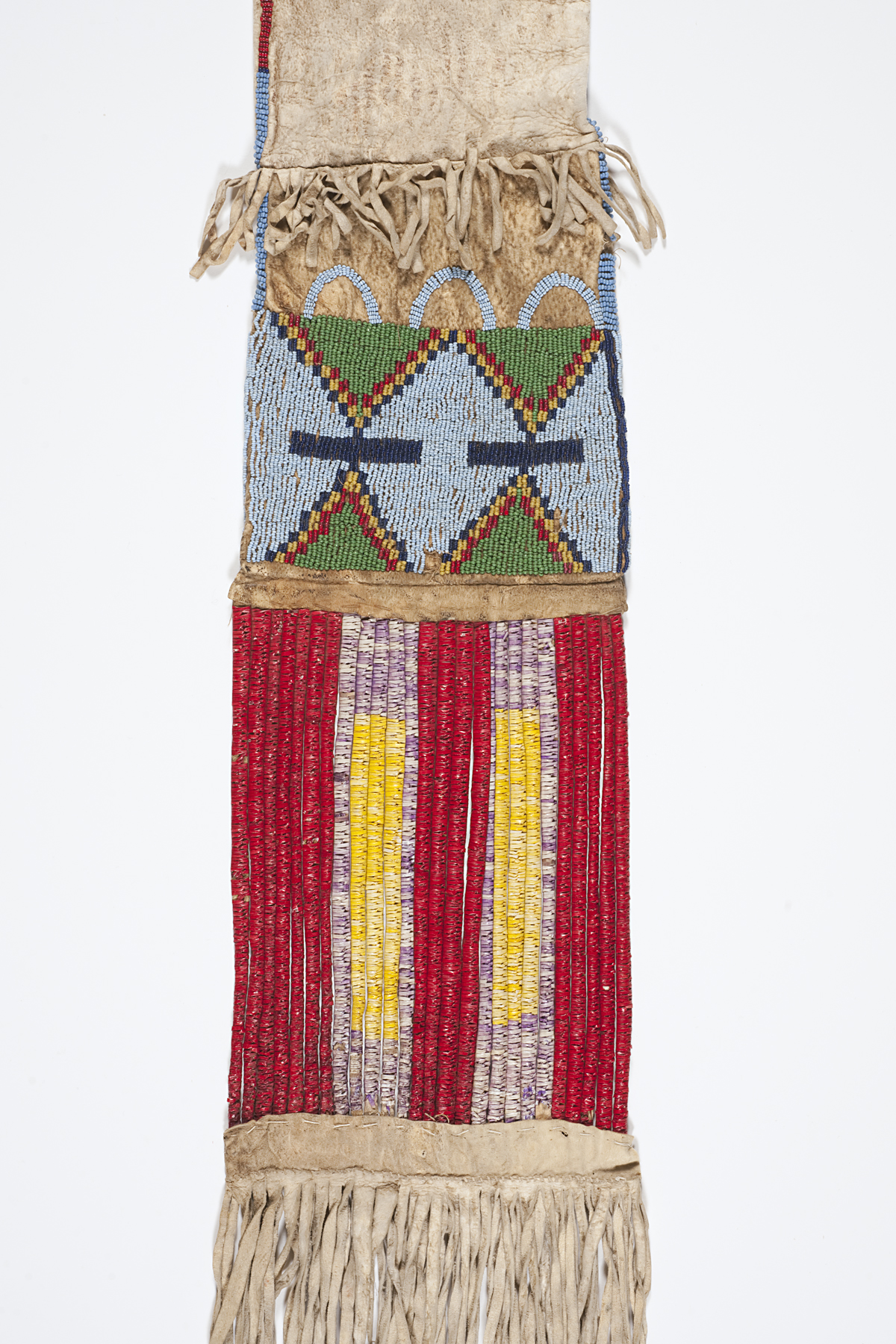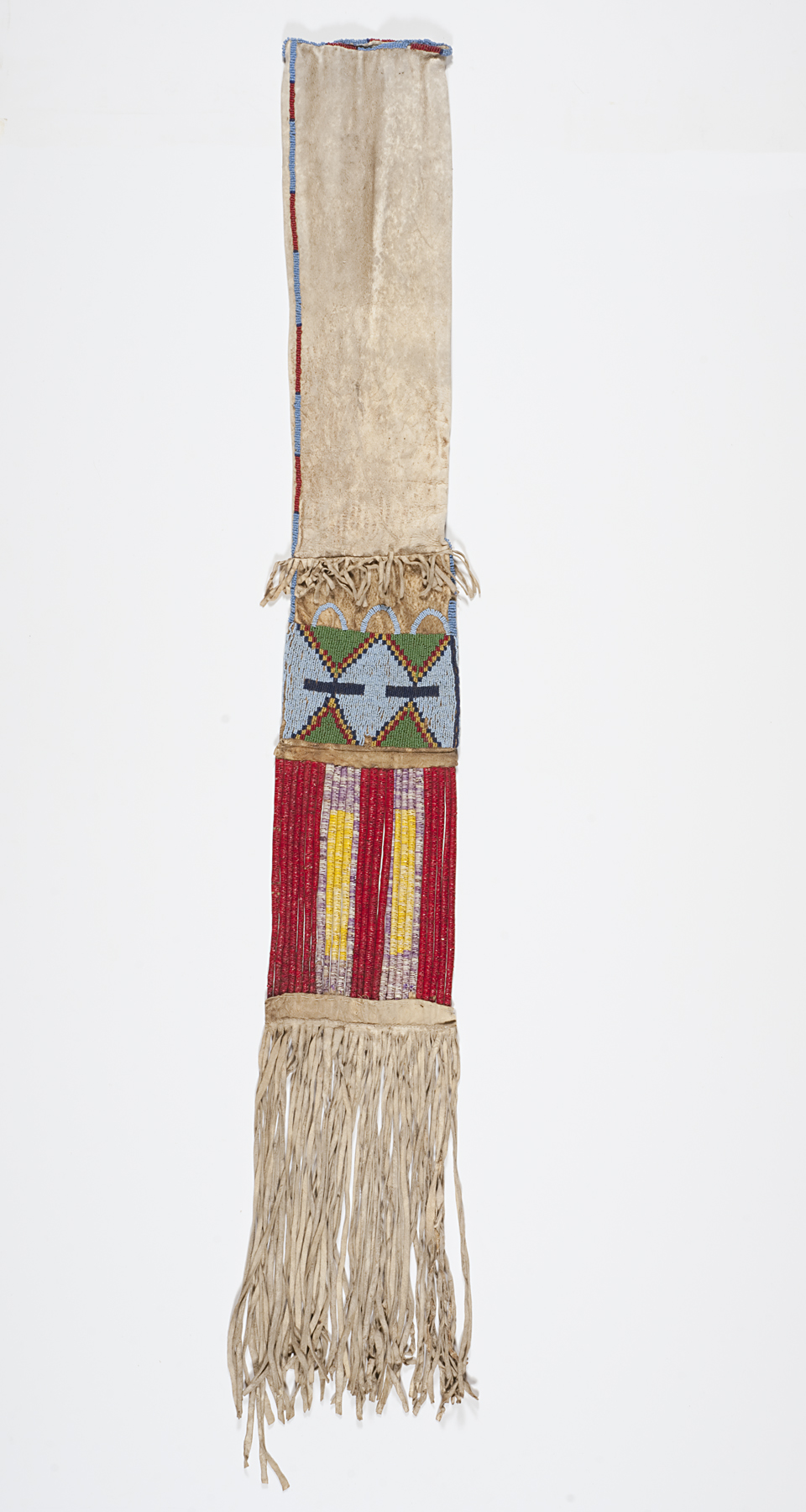pipe bag, unrecorded Hinono’eino artist
Artwork Overview
pipe bag,
late 1800s–1975
Where object was made: United States
Material/technique: quills; beads; beading; buckskin; pigment; sinew
Dimensions:
Object Length/Width (Length x Width): 129 x 17 cm
Object Length/Width (Length x Width): 6 11/16 x 50 13/16 in
Object Length/Width (Length x Width): 129 x 17 cm
Object Length/Width (Length x Width): 6 11/16 x 50 13/16 in
Credit line: Gift from the Menninger Foundation
Accession number: 2007.1277
Not on display
If you wish to reproduce this image, please submit an image request








